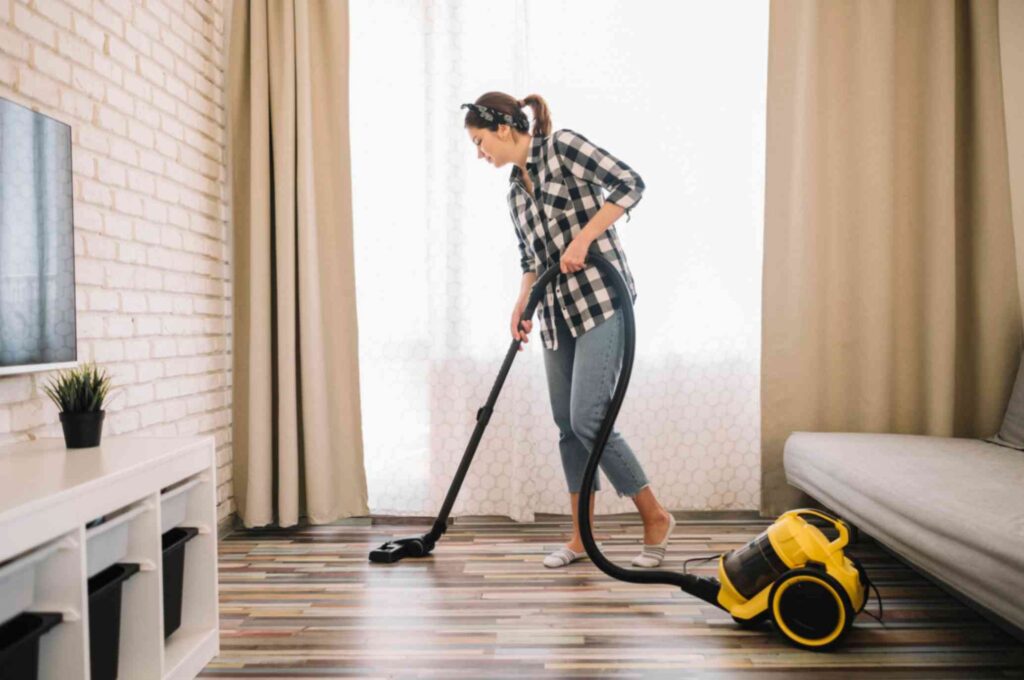Allergens, such as dust mites, pet dander, and pollen, are common triggers for allergies and asthma. They often accumulate in the home and office environments, especially on the floors, which are one of the primary areas where dust and allergens settle. With regular cleaning, these allergens can be minimized, but not all cleaning methods are equally effective. One of the most efficient tools for allergen reduction is the floor cleaning machine, particularly the wet and dry vacuum cleaner. In this article, we will explore the role of floor cleaning machines in reducing allergens and improving indoor air quality.
Understanding Allergens and Their Impact
Allergens are substances that cause allergic reactions. These reactions can range from mild symptoms like sneezing and itching to more severe issues such as asthma attacks or skin rashes. Common indoor allergens include:
- Dust mites: Microscopic creatures that thrive in dust and are particularly abundant in bedding, carpets, and upholstery.
- Pet dander: Tiny flakes from animal fur and skin that can irritate those with allergies.
- Pollen: Plant-based allergens that enter homes through open windows or on clothing and pets.
- Mold spores: Often found in damp areas, mold spores can exacerbate respiratory issues.
These allergens often accumulate on the floor, making it a key area to target during cleaning. Regular vacuuming and deep cleaning can reduce their presence, preventing or alleviating allergy symptoms.
How Floor Cleaning Machines Help Reduce Allergens
Floor cleaning machines, including traditional vacuum cleaners, wet and dry vacuum cleaners, and steam cleaners, play a crucial role in reducing allergens. They can remove dirt, dust, and other debris from various types of flooring, including carpets, tiles, and hardwood. However, not all floor cleaning machines are created equal. Some models are more effective at reducing allergens than others.
Wet and Dry Vacuum Cleaner: The Ultimate Tool for Allergens
A wet and dry vacuum cleaner is a versatile cleaning tool that combines the benefits of both wet and dry cleaning. These machines are designed to clean up both dry debris and liquid spills, making them highly effective at removing allergens from floors and surfaces.
- Effective Dust and Dirt Removal: Wet and dry vacuum cleaners are powerful enough to pick up fine dust particles, pet hair, and dirt, which are common carriers of allergens. Unlike traditional vacuums, these machines often have advanced filtration systems that trap small particles, preventing them from being released back into the air.
- Deep Cleaning: Wet cleaning capabilities in these vacuums enable them to provide a deeper clean. By using water or cleaning solutions, wet and dry vacuums can break down allergens like pet dander or pollen, which can get embedded in carpet fibers or upholstery. This allows for more thorough allergen removal compared to dry-only vacuums.
- HEPA Filtration: Many high-quality wet and dry vacuums come equipped with HEPA (High-Efficiency Particulate Air) filters. These filters are capable of capturing 99.97% of particles as small as 0.3 microns. HEPA filtration is particularly important for allergy sufferers, as it prevents allergens from being expelled back into the air, ensuring a cleaner environment.
- Mopping and Wet Extraction: The wet function of these vacuums allows them to mop or extract water and dirt from floors, providing an additional layer of cleaning. This function is especially helpful in tackling sticky allergens like pet dander and dust mites, which can be harder to remove with dry cleaning methods alone.
Advantages of Using Wet and Dry Vacuum Cleaners for Allergy Reduction
1. Better Indoor Air Quality
A significant benefit of using a wet and dry vacuum cleaner is its ability to improve indoor air quality. Regular vacuuming with a standard vacuum can stir up dust and allergens, leading to them becoming airborne again. In contrast, the wet cleaning action of a wet and dry vacuum can trap and eliminate dust, dirt, and allergens more effectively, keeping them contained within the machine and preventing them from circulating in the air.
2. Allergen Control in Multiple Environments
Wet and dry vacuum cleaners are suitable for use on various surfaces, including hard floors, carpets, and upholstery. This makes them versatile tools for controlling allergens in multiple environments, such as homes, offices, and commercial spaces. By using a wet and dry vacuum, you can ensure that allergens are effectively removed from both hard and soft surfaces, where they are commonly found.
3. Enhanced Durability and Longevity
The ability of wet and dry vacuums to tackle both wet and dry debris means that they can handle more rigorous cleaning tasks. This is particularly beneficial in environments with high levels of allergens, such as homes with pets or businesses in dusty areas. The durability of these machines allows for long-term use without sacrificing performance, making them a wise investment for those who suffer from allergies.
Complementary Cleaning Methods for Allergy Reduction
While a wet and dry vacuum cleaner is highly effective at removing allergens, it is essential to incorporate other cleaning methods for optimal allergen control.
1. Regular Dusting and Surface Cleaning
In addition to vacuuming, regularly dusting surfaces such as shelves, furniture, and baseboards is crucial for reducing allergens. Use a damp microfiber cloth, as it can trap dust rather than spreading it around, ensuring that allergens are removed efficiently.
2. Wash Bedding and Upholstery
Dust mites and pet dander often accumulate in bedding, pillows, and upholstery. Washing bedding regularly in hot water can help reduce the presence of these allergens. Consider using allergen-proof covers for pillows and mattresses to provide extra protection.
3. Control Humidity Levels
Excess moisture can encourage the growth of mold and mildew, which are common allergens. Using a dehumidifier in damp areas of the home can help reduce mold growth and improve air quality.
Conclusion
Allergens are a persistent problem in many homes and workplaces, but floor cleaning machine, especially wet and dry vacuum cleaners, can significantly reduce their presence. These machines provide an effective and versatile cleaning solution, removing dust, pet dander, pollen, and other allergens from floors and surfaces. Their powerful suction, advanced filtration systems, and wet cleaning capabilities make them ideal tools for improving indoor air quality and alleviating allergy symptoms. To maximize allergen control, it is essential to complement vacuuming with other cleaning methods, such as regular dusting, washing bedding, and controlling humidity. By incorporating these practices, individuals can enjoy cleaner, healthier environments, free from the allergens that can cause discomfort and health issues.

